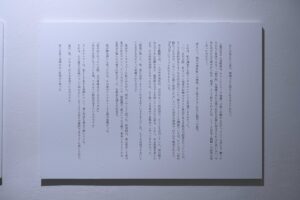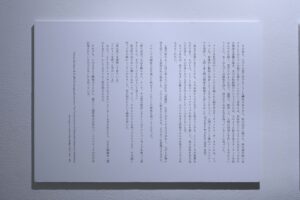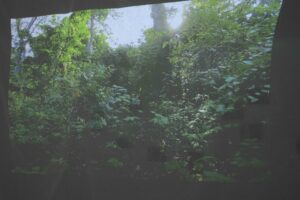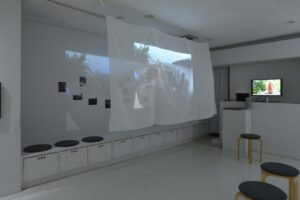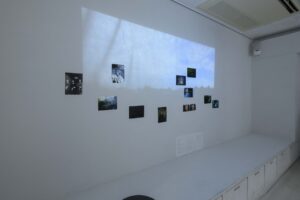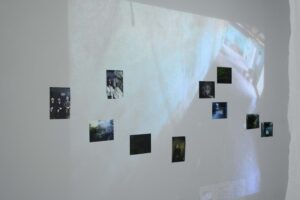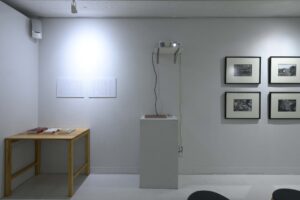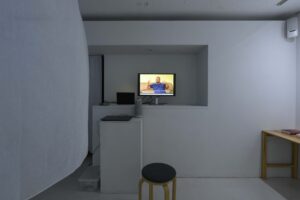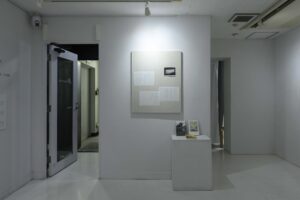“If You Touch It, You Die” 『触れたら、死ぬ』
Exhibited in im/pulse: Pulsating Images
June 2 – July 8, 2018, Kyoto City University of Arts Gallery @KCUA
Author: Ran Muratsu
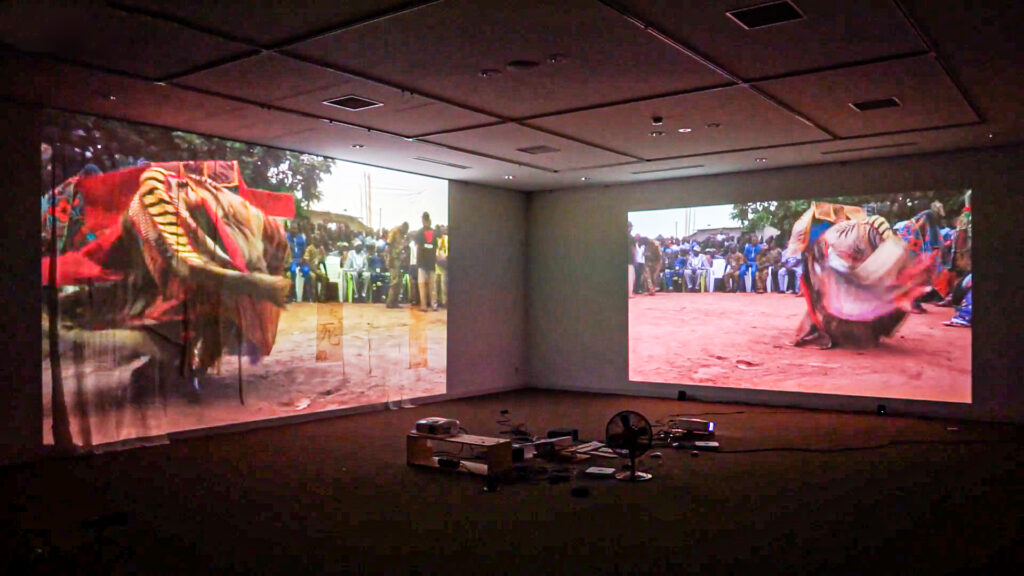
This video and textile installation explores the proposition, “If you touch the kubito cloth, you die,” based on the performances of kubito ancestral mask societies found in southern Benin.
Kubito is traditionally considered a Yoruba-based ancestral spirit society, and only men are allowed to join. The cloth worn by the Kubito is believed to contain celestial power, said to possess healing and magical qualities. It is widely believed that “If you touch the Kubito cloth, you die.” When a Kubito dances in the village square, people flee in fear of coming into contact with the cloth.
At the same time, however, there exists a shared understanding—even within the society—that touching the cloth does not actually result in death. Despite this, a deep reverence and fear of the cloth persists.
How is this “awe” cultivated? What role does the object—the “cloth”—play in this process? How does this resonate with experiences of religious awe and taboo in Japan? This installation, composed of cloth inscribed with text and video projected onto two screens, explores these questions through the intersection of image, material, and belief.
“Humans, Things, and Fetish” 『人・モノ・物神』
Exhibited in im/pulse: Pulsating Images
June 2 – July 8, 2018, Kyoto City University of Arts Gallery @KCUA
Artists: Ran Muratsu, Yanosuke Yanohara, Pero Fukuda
This participatory installation centers around the questions: “How do objects come to possess power?” and “What kinds of trajectories are involved in this process?”
A hut made of cloth presents the audience with the proposition: “You must create an object to protect yourself.” Participants are then invited to make such an object and offer it at an altar within the space. Through this process, the installation allows them to experience firsthand the trajectory through which an object acquires power.
At the same time, the installation served as a “field site” for the authors/researchers, who engaged in dialogue with participants and the objects they created, in order to reflect on the nature of the experience unfolding. This dual function—as both a participatory artwork and a form of ethnographic inquiry—was a defining feature of the installation.
“Kage no Bunzai / Thresholds of Shadows” 『影の分際』(at Shinjuku Ganka Gallery, February 14–19, 2025)
Authors: Ran Muratsu, Rina Kawamoto, Tetsuaki Fujimoto
This exhibition was an experimental collaboration between a cultural/visual anthropologist, a photographer, and a poet. Through ongoing dialogue among the three—each working with different expressive media and orientations—they co-created a unified exhibition. The project explored the extensibility and potential of each discipline when brought into conversation with one another. Additionally, by hosting public talks with artists from various fields in conjunction with the exhibition, the team reflected on the meaning of exhibition as a form of scholarly expression.





